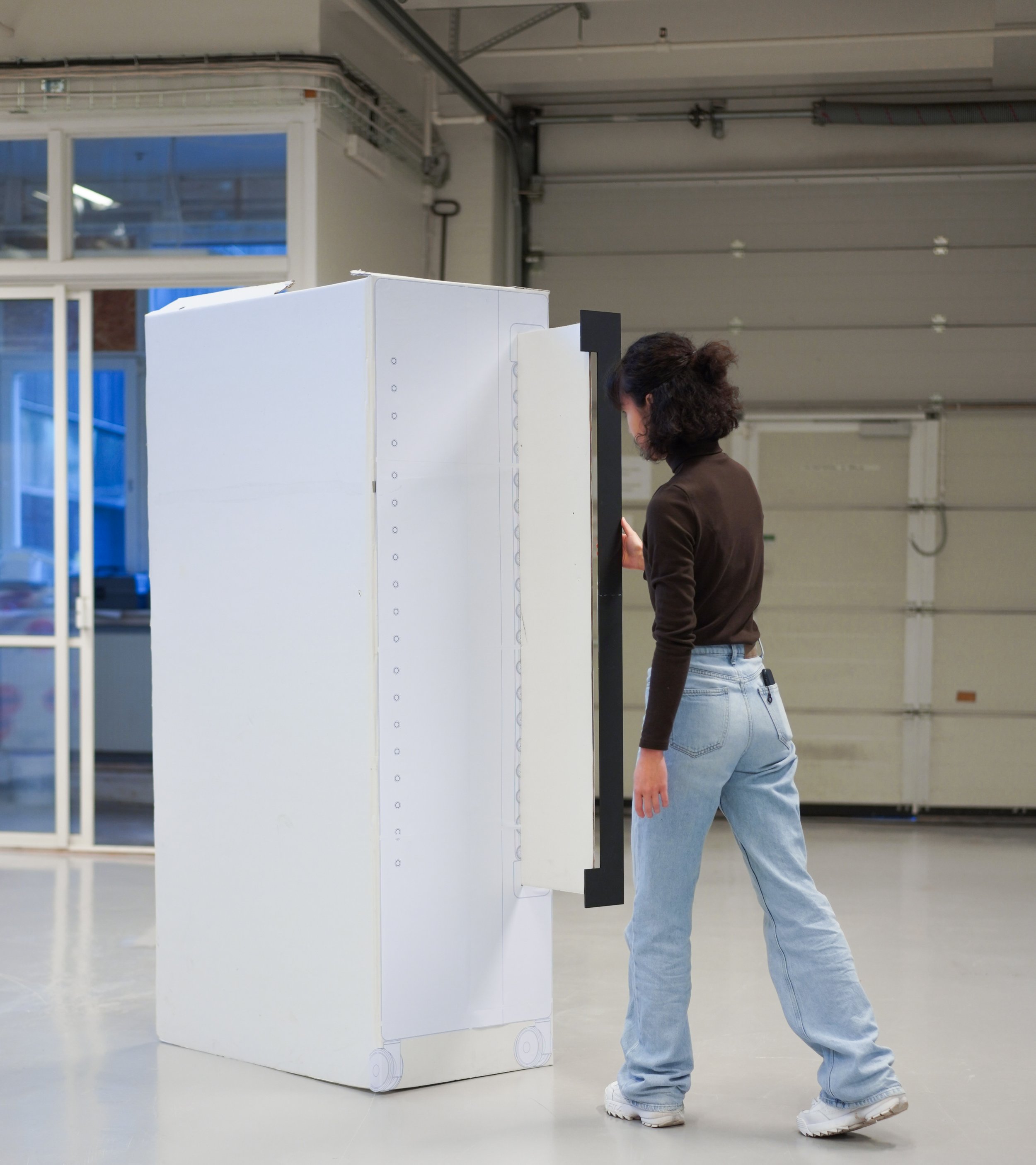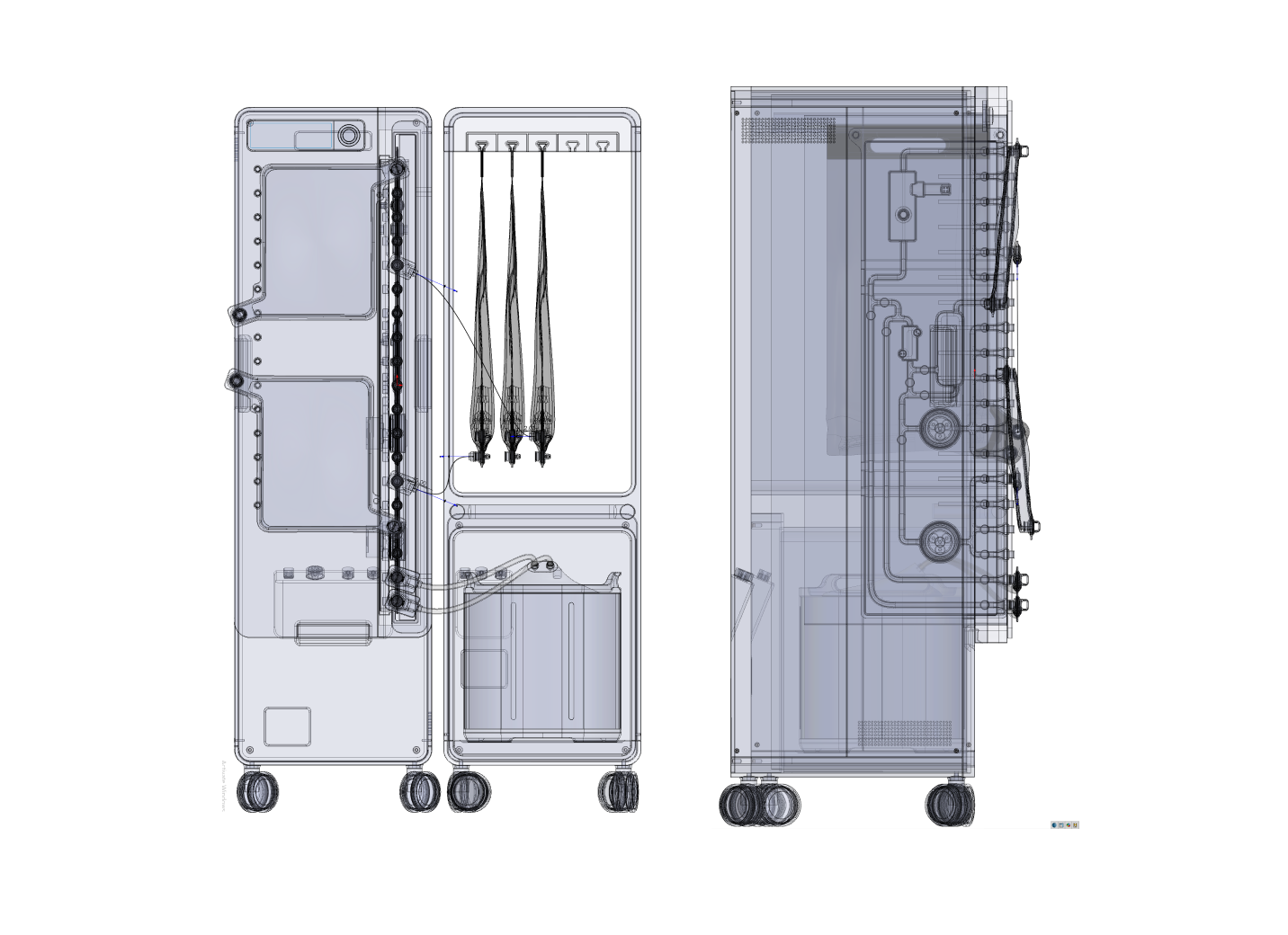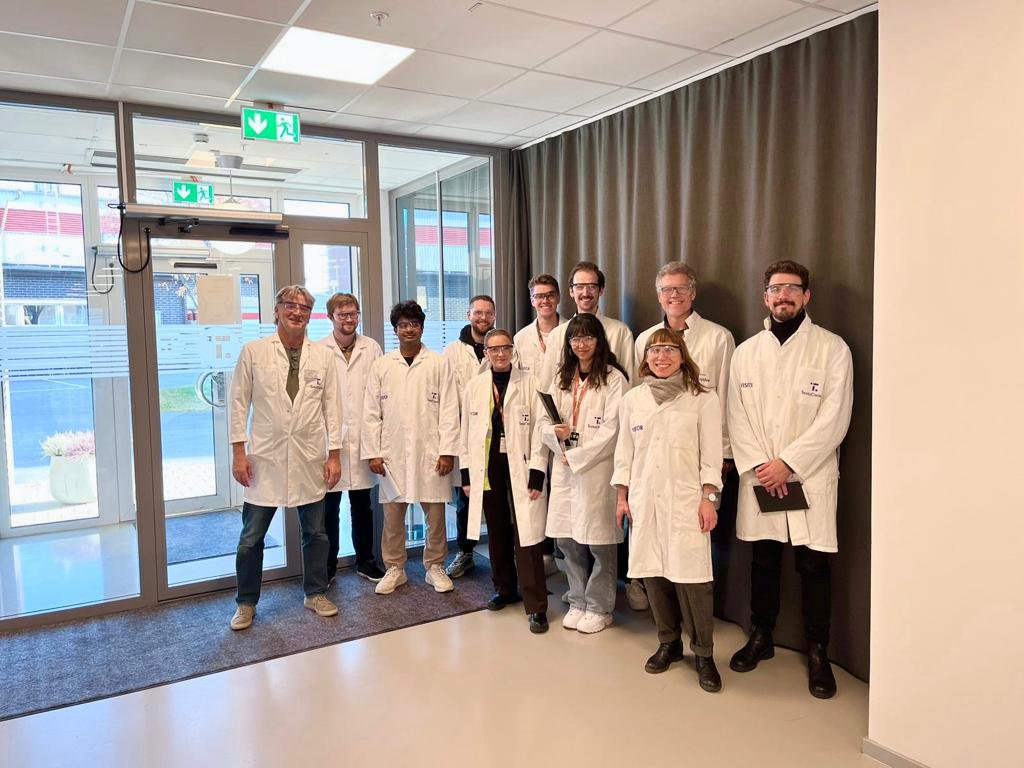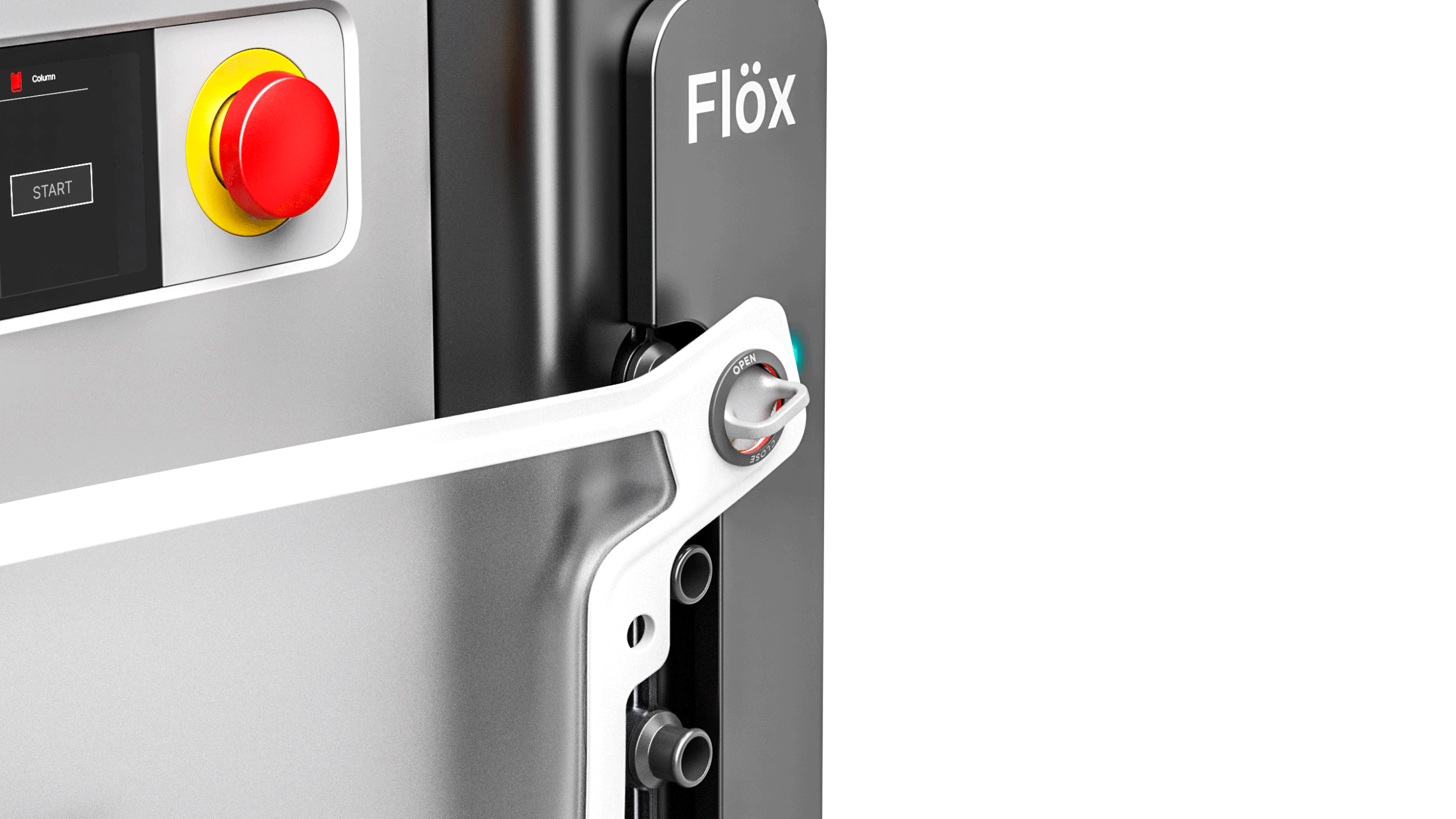Flöx: Next Generation Chromatography System
10.2022 - 12.2022/ 10-week team project
Teammate: Jakob Kohnle
Keywords:
Pharmaceutical production, user experience, footprint & sustainable solution
Collaborated with:
Introduction
This project was the third semester of my master studies. It was a very technical project collaborated with Cytiva that gave us a great challenge. We tried to look into the future and tried to redesign a machine that has existed for 15 years.
For me, the most challenging part is that I need a long time to truly understand the principle, how does the machine work, why previous design was like this. However, the process of asking questions is also an opportunity to stimulate new ideas.
What is chromatography?
Liquid chromatography is an analytical technique utilised widely in the pharmaceutical industry. It is an analytical technique that is used to separate a certain sample into its individual components.1 The separation occurs when the sample interacts with the mobile (liquid) and stationary phases (column). The various parts of the sample are separated out based on their polarities; they will have varying levels of affinity for the mobile phase, resulting in migration through the column at different speeds.
What is covered in the system?
A full Chromatography machine system contains: inlet, outlet, column, flow kit, and the machine itself. The basic workflow as it is shown in the picture.
Role play research process
For this project, our class worked together to build a 1:1 model of a typical kind of chromatography machine for role-playing and experiential research when it was unable to ship the physical machine to the school.
Current operator’s journey
We experienced what an operator would experience in a clean room, the pharmaceutical manufacturing environment.
1. Unseal the flow kit package
2. Take out the “spaghetti“ flow kit
3. Open the valves
4. Put the flow kit to the machine
5. Organise the flow kit on the machine
6. Put tubes in valves and close them
7. Link the flow kit to sensors
8. Connect the inlet
9. Connect the outlet
Current footprint for the machine
With the current machine, the operator needs to walk to both sides to make the connection, resulting in a large footprint. The problem caused by machines with a large footprint is that they require a larger cleanroom, and a large cleanroom requires a much larger amount of energy consumed by the air cleaning system, which is not sustainable.
Pain points conclusion
So, how can we improve the flow kit setup efficiency and operators’ user experience?
A solution starts from a new generation flow kit - Flowpack
The core of the design is a newly developed single use Flowkit. It is made of 4 Layers and includes all the components in one package. It integrated UV, post column sensors, pre column sensors, airtrap, and two pumps for gradient processes. Inlets and Outles for the liquid are all located on one side.
Rigid shell:
Components are kept in shape by the rigid shell, and as the rigid shell do not contaminated the liquid, it can be recycled and reused.
Holes for valves:
There are holes on the Flowpack for mating with the valves on the machine. This way, the valves are still functional even with the rigid shall to control the fluid flow. At the same time, the rigid shell ensures accurate positioning of the valves.
Foldable solution for better handling and transporting:
The foldable design saves space for transportation and all the technician needs to do is to open the Flowpack and place it in the right place on the machine
A machine that matches the Flowpack - Flöx:
With the compact flow kit solution, Flowpack, the machine is designed accordingly. Since the inlet and outlet of the liquid are located on one side of the Flowpack, we changed the original mounting orientation of the flowkit, horizontal, into vertical. A mounting drawer concept is developed during the process.
Flöx: A solution with smaller footprint:
As we changed the flow kit mounting direction, the two sides of the machine is free and all features of the machine can be accessed from the front.
Inner clamp
On the inside is a clamp that interfaces with the sensors pumps and valves of the Flowpack.
It clamps the Flowpack securely in place connecting all sensors and Pumps at once without the need for any further steps.
The valves on the inner clamp:
Instead of operators open and close the valves to help control the flow, the Flöx machine does it for the operator. The green dot as shown matches the wholes on the FLowpack.
Additional parts of the system: small-medium scale Liquid bags
As we designed that all the features can be access from the front, a new liquid bag system is also designed accordingly.
Additional parts of the system: A new connecting system
The liquid bags can be directly attached to the Flowpack and the valves can be opened to enable liquid flow in or out of the bag. This connection system reduces the effort required by the operator to clamp all the tubing and parts together and is used to other features of our Flöx system.
Scalability
Apart from the small-medium scale Pharmaceutical production, we also considered larger scale. In the lager scale case, an additional cart can be added to the system to hold the liquid bag and column wiht lagger volume.
Everything can be accessed from the front
With the Flöx system, the operator only needs to access the front which enables us to position several machines directly next to each other, minimizing operational footprint and enabling easy scalability.
With streamlined processes and less components, Flöx is our vision for the future of Chromatography.
Process



















































